A Look at Corporate Efforts in Disaster Preparedness and Management
In today's unpredictable world, the importance of disaster preparedness and management cannot be overstated. Corporations are increasingly recognizing that being proactive rather than reactive can make all the difference when disaster strikes. Imagine a ship navigating through a storm; those who have charted their course and prepared their crew will weather the storm much better than those who are caught off guard. This article delves into how businesses are enhancing their strategies to mitigate risks, ensure employee safety, and maintain operational continuity during emergencies.
Disaster preparedness is not just about having a plan; it encompasses a comprehensive approach that includes planning, training, and resource allocation to effectively respond to emergencies. The significance of being prepared lies in its ability to minimize damage and facilitate a quicker recovery for businesses. When a company is prepared, it can resume operations faster, protect its employees, and safeguard its assets. In fact, studies have shown that organizations with solid disaster preparedness plans can recover from crises up to 50% faster than those without.
Effective disaster management begins with a thorough risk assessment. Companies need to identify potential threats and vulnerabilities to create robust response plans. This proactive approach not only helps in recognizing risks but also in prioritizing them based on their potential impact. For instance, a manufacturing company might face risks from natural disasters like floods or earthquakes, while a tech firm might be more concerned about cyber-attacks. Understanding these nuances is crucial for tailoring disaster management strategies.
Understanding the specific vulnerabilities within a company's operations is crucial for effective disaster preparedness. Vulnerabilities can arise from various sources, including outdated technology, lack of employee training, or even physical infrastructure weaknesses. Companies can employ methods such as SWOT analysis (Strengths, Weaknesses, Opportunities, Threats) to identify these weaknesses. By acknowledging where they fall short, organizations can take proactive steps to bolster their defenses.
Companies face both internal and external risks, and it's essential to differentiate between the two. Internal risks may include operational failures, employee misconduct, or equipment malfunctions, while external risks can stem from natural disasters, economic downturns, or even geopolitical tensions. Understanding these categories allows companies to tailor their disaster management plans effectively. For example, a financial institution might prioritize cybersecurity measures to address internal risks, while a manufacturing plant might focus on disaster recovery plans for external threats.
Technology plays a vital role in risk assessment and disaster preparedness. Corporations can leverage various tools and software to evaluate their disaster readiness. For instance, predictive analytics can help forecast potential risks, while cloud-based solutions can ensure data backup and recovery. Here are a few technologies that companies are using:
- Risk Management Software: Helps in identifying and analyzing risks.
- Simulation Tools: Allows companies to run disaster scenarios and assess their response.
- Communication Platforms: Ensures effective communication during a crisis.
By integrating these technologies, companies can create a more resilient disaster management framework.
An effective response plan outlines the steps to take during a disaster. It should include clear roles and responsibilities, communication strategies, and recovery procedures. A well-structured response plan not only helps in minimizing chaos during an emergency but also instills confidence among employees. Key components of an effective response plan include:
- Emergency Contact Lists: Up-to-date contact information for all employees and emergency services.
- Evacuation Procedures: Clear guidelines on how to safely evacuate the premises.
- Resource Inventory: A list of available resources and equipment for disaster response.
By having these elements in place, companies can ensure a coordinated and efficient response when disaster strikes.
Regular training and drills are essential for preparedness. Engaging employees in disaster response training fosters a culture of preparedness and equips them with the skills needed to act decisively in a crisis. Imagine a fire drill: the more frequently it is practiced, the more instinctive the response becomes. Companies should not only conduct drills but also make them as realistic as possible to prepare employees for actual emergencies.
Maximizing participation in drills is crucial for their effectiveness. Companies can employ various strategies to engage employees, such as gamifying the training process or offering incentives for participation. When employees feel involved and valued, they are more likely to take the training seriously and apply what they learn in real situations.
After conducting drills, evaluating their effectiveness is critical. Companies should assess performance through feedback sessions, surveys, and by analyzing response times. This evaluation process helps identify areas for improvement and ensures that the training remains relevant and effective. Continuous improvement should be the goal, as no plan is ever perfect, and learning from past experiences can significantly enhance future preparedness.
Collaboration with local emergency services enhances disaster response. Building relationships with fire departments, police, and medical services can provide invaluable insights and resources during a crisis. Joint training exercises can also help familiarize employees with the protocols of local emergency services, ensuring a smoother response during actual emergencies.
Analyzing successful corporate disaster preparedness initiatives provides valuable insights. For instance, a well-known tech company implemented a comprehensive disaster recovery plan that included regular employee training, partnerships with local emergency services, and a robust communication strategy. As a result, when a significant cyber-attack occurred, they were able to respond swiftly and minimize data loss, demonstrating the effectiveness of their preparedness efforts.
As the landscape of disasters evolves, so do management strategies. Emerging trends include the use of artificial intelligence for predictive analytics, the adoption of remote work policies to ensure continuity, and an increased focus on mental health support for employees affected by crises. Companies that stay ahead of these trends will be better positioned to navigate the challenges of tomorrow.
1. What is the first step in disaster preparedness for a corporation?
The first step is conducting a thorough risk assessment to identify potential threats and vulnerabilities.
2. How often should companies conduct disaster drills?
Companies should conduct drills at least twice a year, but more frequent training may be beneficial depending on the industry.
3. Why is collaboration with emergency services important?
Collaboration enhances response capabilities and ensures that companies understand the protocols and resources available during a crisis.
4. What role does technology play in disaster preparedness?
Technology aids in risk assessment, communication during emergencies, and helps streamline recovery processes.
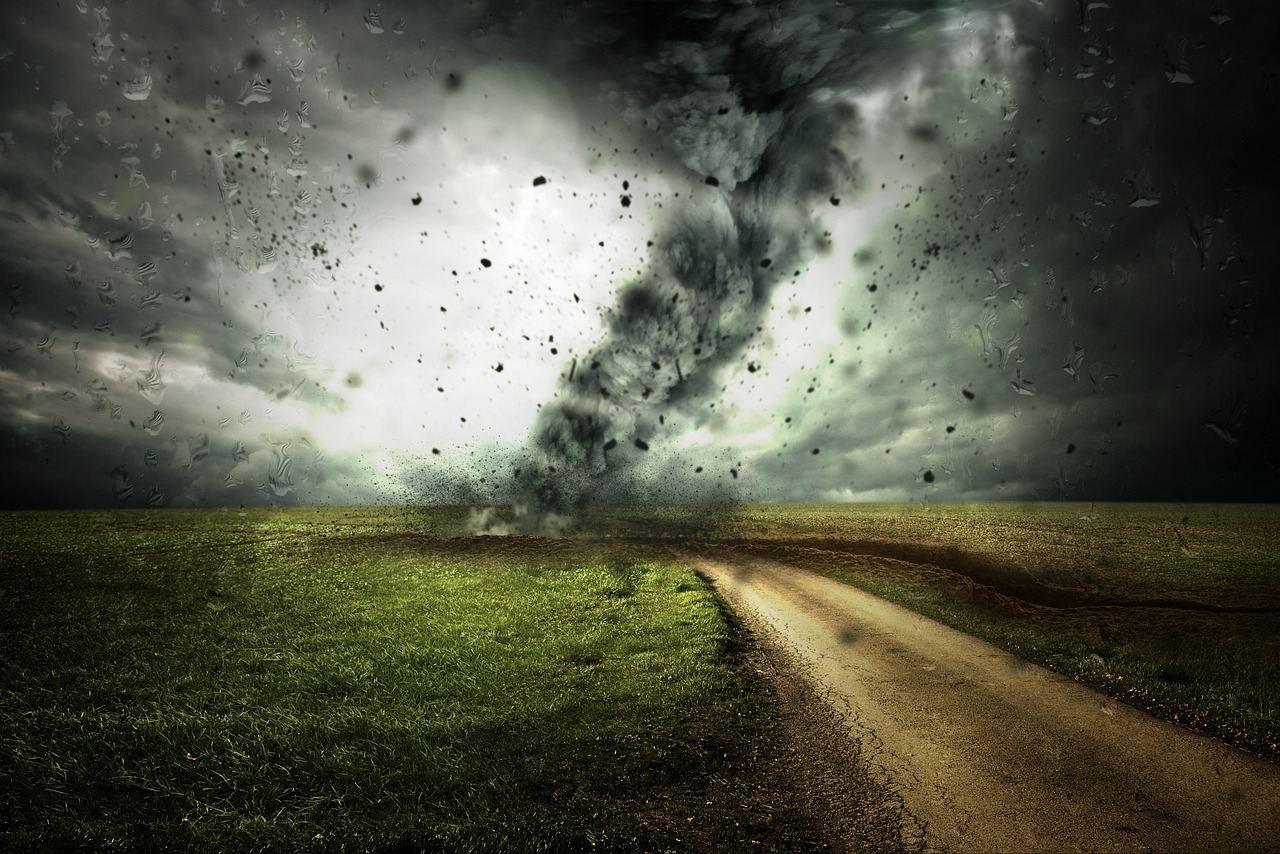
Understanding Disaster Preparedness
Disaster preparedness is not just a buzzword; it's a critical strategy that can mean the difference between chaos and control during emergencies. Imagine a ship caught in a storm without a captain—chaos reigns. Similarly, businesses that fail to prepare for disasters often find themselves navigating turbulent waters without a plan. The essence of preparedness lies in planning and developing strategies that ensure a swift and effective response when disaster strikes.
Being prepared means minimizing damage and ensuring a quick recovery, which is vital for maintaining operational continuity. Companies that invest in disaster preparedness are not just protecting their assets; they are safeguarding their employees, clients, and reputation. The repercussions of inadequate preparedness can be severe, ranging from financial losses to irreparable damage to a company's brand. For instance, a natural disaster can disrupt supply chains, halt production, and create uncertainty among employees and stakeholders alike.
To put things into perspective, let's consider the following aspects of disaster preparedness:
- Risk Mitigation: Identifying potential threats allows businesses to develop strategies that mitigate risks before they escalate.
- Resource Allocation: Preparedness entails optimal allocation of resources, ensuring that necessary tools and personnel are available when needed.
- Employee Safety: Prioritizing the safety of employees fosters a culture of trust and loyalty, which can enhance overall productivity.
Moreover, disaster preparedness is not a one-time effort; it's an ongoing process that involves regular reviews and updates of plans. Companies must remain vigilant and adaptable as new threats emerge. This means that the strategies developed today might need to evolve tomorrow. For example, the rise of cyber threats has made it essential for businesses to incorporate cybersecurity measures into their disaster preparedness plans. Just as a fire drill ensures readiness for physical emergencies, cybersecurity drills prepare teams for potential digital crises.
In conclusion, understanding disaster preparedness is about recognizing its importance and integrating it into the corporate culture. By doing so, businesses can not only survive disasters but also thrive in the aftermath. After all, it's not just about weathering the storm; it's about learning to dance in the rain!

Corporate Risk Assessment Strategies
When it comes to disaster management, the first step is often the most crucial: risk assessment. This is where companies take a deep dive into identifying potential threats that could disrupt their operations. Think of it as a treasure hunt, but instead of looking for gold, businesses are searching for vulnerabilities that could lead to significant losses. By pinpointing these risks, corporations can create robust response plans that not only mitigate damage but also ensure a swift recovery.
Effective risk assessment is like having a crystal ball—it allows companies to foresee potential disasters and prepare accordingly. But how do organizations actually identify these risks? It involves a combination of methods, including surveys, historical data analysis, and expert consultations. For instance, a company might analyze past incidents in their industry to understand what went wrong and how they can avoid similar pitfalls. This proactive approach is essential for maintaining operational continuity during emergencies.
Moreover, understanding the specific vulnerabilities within a company's operations is crucial. Companies often categorize risks into two main types: internal and external risks. Internal risks might include factors like outdated technology, while external risks could involve natural disasters or economic downturns. By differentiating between these two categories, businesses can tailor their disaster management plans more effectively.
Identifying vulnerabilities is not just about ticking boxes; it requires a thorough examination of various aspects of the organization. Companies often conduct comprehensive audits that scrutinize everything from supply chain dependencies to employee safety protocols. For example, if a company relies heavily on a single supplier for critical components, that dependency could be a significant vulnerability. Recognizing such weaknesses allows businesses to diversify their supply chains, thereby reducing risks.
It's essential to understand that internal and external risks can interact in complex ways. For instance, a natural disaster (external) could expose weaknesses in a company's emergency response plan (internal). Therefore, a well-rounded risk assessment should consider how these risks influence one another. This holistic view not only aids in crafting more effective response strategies but also enhances overall organizational resilience.
In today's digital age, technology plays an indispensable role in risk assessment. Companies are leveraging advanced tools and software to evaluate their disaster readiness. For example, risk management software can analyze data in real-time, providing insights that help organizations make informed decisions. Additionally, geographical information systems (GIS) can map out potential risks in specific locations, allowing companies to prepare for region-specific threats.
Moreover, the use of artificial intelligence (AI) in predictive analytics is revolutionizing how businesses approach risk assessment. By analyzing vast amounts of data, AI can identify trends and predict potential risks before they become critical. This not only saves time but also enhances the accuracy of risk assessments, allowing companies to allocate resources more effectively.
In conclusion, corporate risk assessment strategies are vital for effective disaster management. By understanding vulnerabilities, differentiating between internal and external risks, and utilizing advanced technology, companies can create comprehensive response plans. This proactive approach not only safeguards employees but also ensures that businesses can continue to thrive, even in the face of adversity.
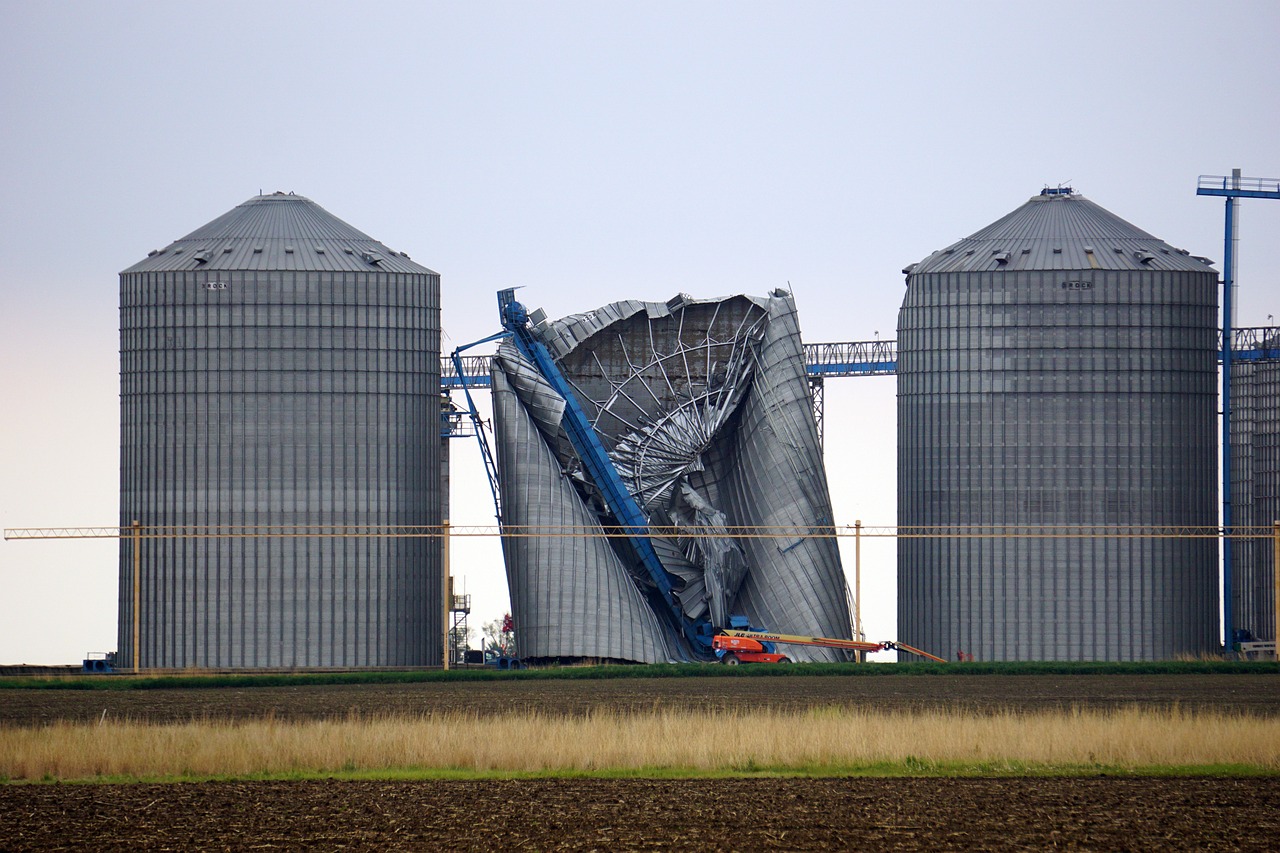
Identifying Vulnerabilities
When it comes to disaster preparedness, within a company's operations is not just important; it's absolutely crucial. Imagine trying to build a fortress without knowing where the weak spots are. A company that neglects this step is essentially leaving its doors wide open for disaster to walk right in. Vulnerabilities can stem from a variety of sources including physical infrastructure, employee training, and even supply chain dependencies. By pinpointing these weaknesses, organizations can take proactive measures to fortify their defenses.
One effective method for identifying vulnerabilities is conducting a comprehensive risk assessment. This involves analyzing both internal processes and external factors that could potentially disrupt operations. For instance, consider the following areas:
- Physical Infrastructure: Are there any aging buildings or equipment that could fail during a disaster?
- Employee Readiness: Do employees know what to do in case of an emergency? Are they trained adequately?
- Supply Chain Dependencies: Are there critical suppliers that could be affected by a natural disaster, thereby impacting your operations?
Moreover, it’s essential to recognize that vulnerabilities can vary significantly across different departments within an organization. For example, the IT department might face risks related to data security, while the facilities management team might be more concerned about physical safety. Therefore, a cross-departmental approach is vital for a thorough vulnerability assessment. Engaging various teams not only provides a broader perspective but also encourages a culture of shared responsibility for disaster preparedness.
Another effective technique is to utilize technology and data analytics. Modern tools can analyze historical data, simulate disaster scenarios, and even predict potential vulnerabilities based on various factors. For instance, software that maps out geographical risks can help businesses understand how natural disasters like floods or earthquakes could impact their operations. By leveraging these technologies, companies can gain insights that would be nearly impossible to achieve through manual assessments alone.
In summary, identifying vulnerabilities is a multi-faceted process that requires a keen eye and a proactive mindset. By conducting thorough assessments, engaging employees across departments, and utilizing technology, companies can significantly enhance their disaster preparedness strategies. Remember, the goal is not just to survive a disaster, but to emerge from it stronger and more resilient than before.
- What are the common vulnerabilities businesses face during disasters?
Common vulnerabilities include inadequate employee training, outdated infrastructure, and over-reliance on single suppliers. - How often should a company reassess its vulnerabilities?
It’s advisable to reassess vulnerabilities at least annually or whenever there are significant changes in operations or external conditions. - Can technology really help in identifying vulnerabilities?
Absolutely! Advanced software can analyze data and predict potential risks, making it easier for companies to prepare.

Internal vs. External Risks
When it comes to disaster preparedness, understanding the distinction between internal and external risks is crucial for corporations aiming to safeguard their operations. Internal risks are those that originate within the organization itself. These can include factors such as equipment failures, employee errors, or even inadequate training and lack of proper safety protocols. Imagine a manufacturing plant where a critical machine breaks down due to poor maintenance; this is an internal risk that directly impacts productivity and can lead to significant financial losses.
On the other hand, external risks arise from outside the organization and can be more unpredictable. These include natural disasters like hurricanes, earthquakes, and floods, as well as human-made threats such as cyber-attacks or terrorism. For instance, a sudden flood can disrupt supply chains and halt operations, regardless of how well-prepared the internal processes are. The interplay between these two types of risks can often create a complex web of challenges that businesses must navigate.
To effectively manage both internal and external risks, companies need to implement a comprehensive risk assessment strategy. This involves identifying potential threats in both categories and developing tailored response plans. Here’s a quick overview of how internal and external risks can be categorized:
| Type of Risk | Examples | Mitigation Strategies |
|---|---|---|
| Internal Risks |
|
|
| External Risks |
|
|
By recognizing the unique characteristics of internal and external risks, corporations can create more effective disaster management plans. They can also foster a culture of preparedness by involving employees in understanding these risks. After all, when everyone in the organization is aware of potential threats, they are better equipped to respond swiftly and effectively when disaster strikes. Ultimately, the goal is to ensure operational continuity and protect both employees and assets from unforeseen events.

Utilizing Technology for Assessment
In today's fast-paced world, technology has become an indispensable ally in the realm of disaster preparedness and management. Companies are increasingly leveraging advanced tools and software to assess their readiness for potential disasters. Imagine trying to navigate a storm without a radar; that’s what businesses face without the right technology. By utilizing sophisticated assessment tools, organizations can pinpoint vulnerabilities, analyze risks, and formulate effective response strategies.
One of the key technologies employed is risk assessment software, which allows businesses to simulate various disaster scenarios. This software can model the impact of different types of emergencies—be it natural disasters like floods and earthquakes or man-made crises such as cyberattacks. By inputting data related to their specific operations, companies can visualize potential outcomes and devise tailored strategies to mitigate risks. This proactive approach not only enhances safety but also fosters a culture of preparedness among employees.
Moreover, geographic information systems (GIS) play a crucial role as well. These systems provide valuable insights into geographical vulnerabilities and help organizations understand how location can impact disaster response. For instance, a company situated in a flood-prone area can utilize GIS to identify safe evacuation routes and optimal locations for emergency supplies. This technology transforms a company's disaster response plan from a generic outline into a detailed, actionable strategy.
Furthermore, the integration of cloud-based solutions ensures that critical data is accessible in real-time, even during a crisis. This means that decision-makers can access vital information and coordinate responses from anywhere, allowing for swift action when every second counts. In addition, cloud platforms can store and analyze historical data on past incidents, enabling organizations to learn from previous experiences and continuously improve their disaster management strategies.
To illustrate the impact of technology in disaster preparedness, consider the following table that outlines various technological tools and their benefits:
| Technology | Benefits |
|---|---|
| Risk Assessment Software | Simulates disaster scenarios and assesses vulnerabilities. |
| Geographic Information Systems (GIS) | Analyzes geographical risks and aids in planning evacuation routes. |
| Cloud-Based Solutions | Provides real-time data access and facilitates remote coordination. |
| Mobile Applications | Enhances communication and provides emergency alerts to employees. |
In conclusion, embracing technology is no longer optional for companies serious about disaster preparedness. The tools available today not only streamline the assessment process but also empower organizations to respond more effectively to emergencies. As we continue to face unpredictable challenges, the integration of technology into disaster management strategies will be a game-changer, ensuring that businesses are not just prepared but resilient in the face of adversity.
- What is disaster preparedness? Disaster preparedness refers to the planning and strategies put in place to effectively respond to emergencies and minimize damage.
- How can technology improve disaster management? Technology improves disaster management by providing tools for risk assessment, real-time data access, and effective communication during emergencies.
- What role do employees play in disaster preparedness? Employees are crucial in disaster preparedness as their training and engagement in drills ensure a collective response during emergencies.
- Why is collaboration with emergency services important? Collaboration with emergency services enhances the effectiveness of disaster response and recovery efforts, ensuring a coordinated approach during crises.
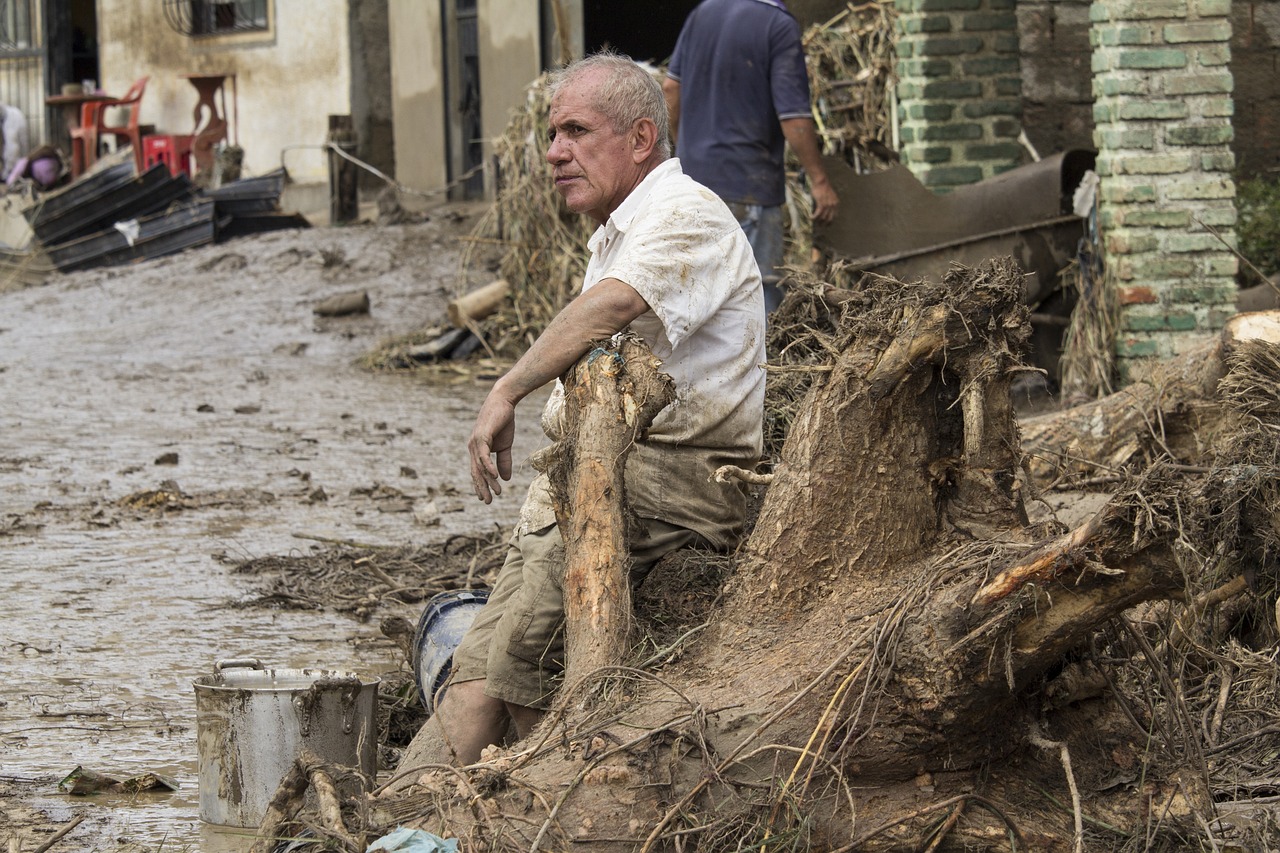
Creating an Effective Response Plan
Creating an effective response plan is like crafting a well-orchestrated symphony; every instrument must play its part to ensure harmony during a disaster. A well-structured response plan not only outlines the steps to take during an emergency but also provides a clear roadmap that guides employees and management alike. The first step in this process is to identify the key components that should be included in the plan. These components typically encompass communication strategies, resource allocation, roles and responsibilities, and evacuation procedures.
To start, communication strategies are paramount. In the chaos of a disaster, clear and concise communication can make all the difference. It’s essential to establish a chain of command and designate specific individuals who will be responsible for disseminating information. This ensures that everyone is on the same page and reduces the risk of misinformation spreading. For instance, utilizing various communication tools such as emails, text alerts, and even social media can enhance the effectiveness of your communication plan.
Next, consider resource allocation. This involves identifying what resources—both human and material—are necessary for a successful response. It's crucial to conduct an inventory of available resources and determine what additional supplies might be needed. You might want to create a
| Resource | Available | Location |
|---|---|---|
| First Aid Kits | Yes | Main Office |
| Emergency Food Supplies | No | N/A |
| Fire Extinguishers | Yes | All Floors |
In addition to communication and resource allocation, defining roles and responsibilities is critical. Every employee should know their specific duties during an emergency. This not only empowers individuals but also fosters a sense of ownership in the disaster response process. For instance, you might designate a safety officer, a communication lead, and a logistics coordinator to streamline operations during a crisis.
Furthermore, evacuation procedures should be clearly outlined and practiced regularly. Employees need to know the quickest and safest routes to exit the building and where to meet once they are outside. Conducting regular drills can help ensure that everyone is familiar with these procedures, making it easier to execute them in an actual emergency.
Finally, it’s essential to regularly review and update the response plan. As businesses evolve, so do their risks and resources. By keeping the plan dynamic and responsive to changes within the organization, companies can enhance their disaster preparedness and ensure that they are always ready to face the unexpected.
In conclusion, creating an effective response plan is not just about having a document on hand; it’s about fostering a culture of preparedness within the organization. By focusing on communication, resource allocation, defined roles, and regular drills, companies can significantly improve their disaster response capabilities. Remember, when the storm hits, it’s too late to prepare; the time to act is now!
- What is the first step in creating a disaster response plan? The first step is to assess potential risks and identify the key components needed for an effective response.
- How often should a response plan be reviewed? It should be reviewed at least once a year or whenever there are significant changes in the organization.
- What role does employee training play in disaster preparedness? Employee training is crucial as it ensures everyone knows their roles and responsibilities during an emergency, thus enhancing overall safety and effectiveness.
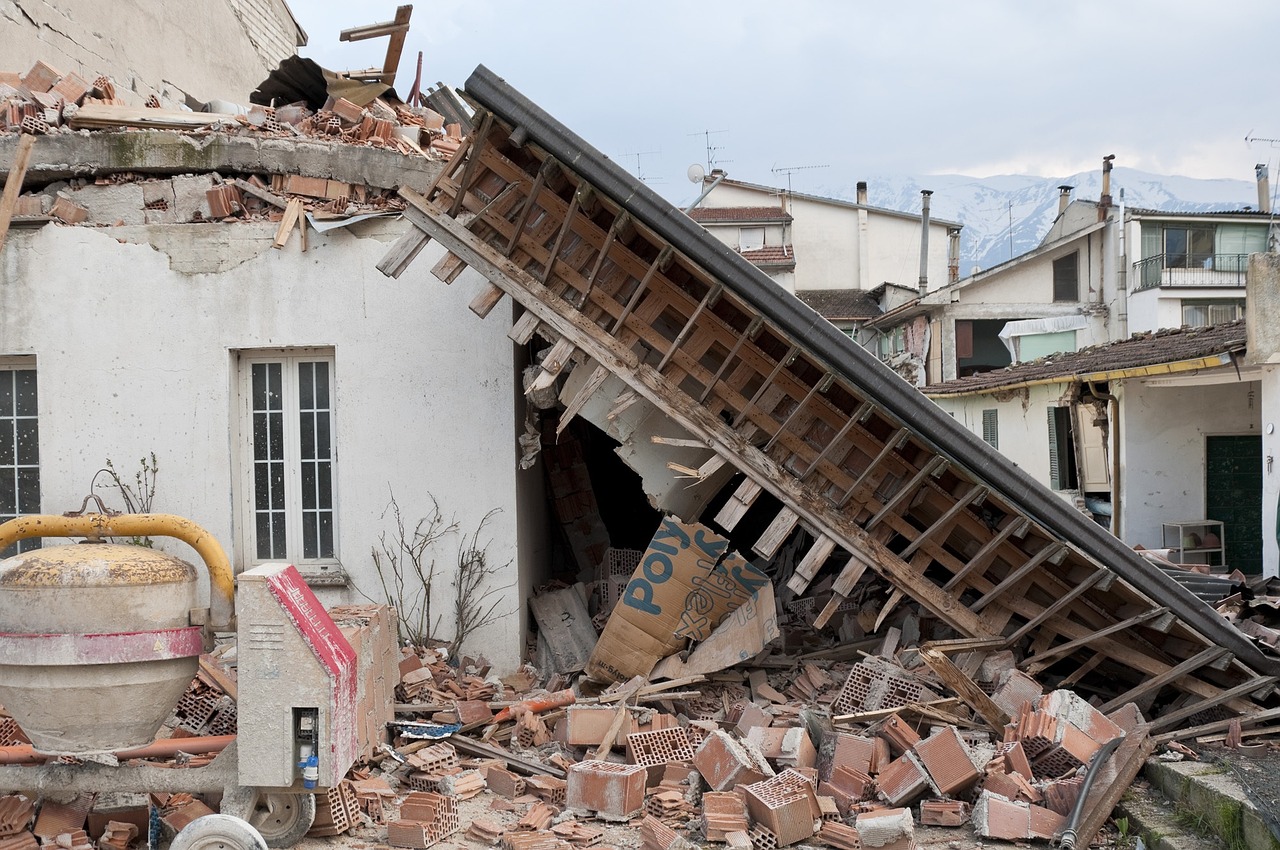
Training and Drills
When it comes to disaster preparedness, one of the most critical components is . Think of it as the rehearsal before the big performance; without practice, even the most talented individuals can falter under pressure. Companies that prioritize regular training sessions and realistic drills equip their employees with the knowledge and skills needed to respond effectively during emergencies. This not only enhances individual confidence but also fosters a sense of teamwork and unity among staff members.
Imagine being in a high-stress situation where every second counts. Wouldn't you want your team to know exactly what to do? That's where the importance of engaging employees in drills comes into play. These drills should not be mere formalities; they need to be immersive and realistic. By simulating actual disaster scenarios, employees can practice their response in a controlled environment. This hands-on experience can significantly reduce panic and confusion when a real crisis strikes.
To maximize participation and effectiveness during these training exercises, companies can implement several strategies:
- Incorporate Realistic Scenarios: Use past incidents or hypothetical situations that could realistically occur within the organization.
- Encourage Feedback: After each drill, gather insights from participants to improve future training sessions.
- Make It Engaging: Use gamification techniques or friendly competitions to keep morale high and encourage participation.
However, conducting drills is just the beginning. Evaluating their effectiveness is equally vital. After each training exercise, companies should analyze performance metrics to determine what worked and what didn’t. This can include assessing response times, communication efficiency, and overall team coordination. By identifying areas for improvement, organizations can refine their preparedness strategies and ensure that employees are better equipped for future emergencies.
In conclusion, regular training and drills are not just a checkbox on a corporate agenda; they are essential for building a resilient workforce. By investing time and resources into these preparedness activities, companies not only enhance their disaster response capabilities but also create a culture of safety and awareness among employees. Remember, when disaster strikes, it’s not just about having a plan; it’s about having a team that knows how to execute that plan flawlessly.
Q: How often should companies conduct disaster drills?
A: Ideally, companies should conduct disaster drills at least twice a year, but more frequent training can be beneficial depending on the nature of the business and the risks involved.
Q: What types of disasters should be included in training?
A: Training should cover a range of potential disasters, including natural disasters (like earthquakes and floods), technological incidents (like cyberattacks), and human-made emergencies (like fires or active shooter situations).
Q: How can companies ensure employee engagement during drills?
A: Companies can ensure engagement by making drills interactive, incorporating realistic scenarios, and encouraging feedback from employees to improve future training sessions.
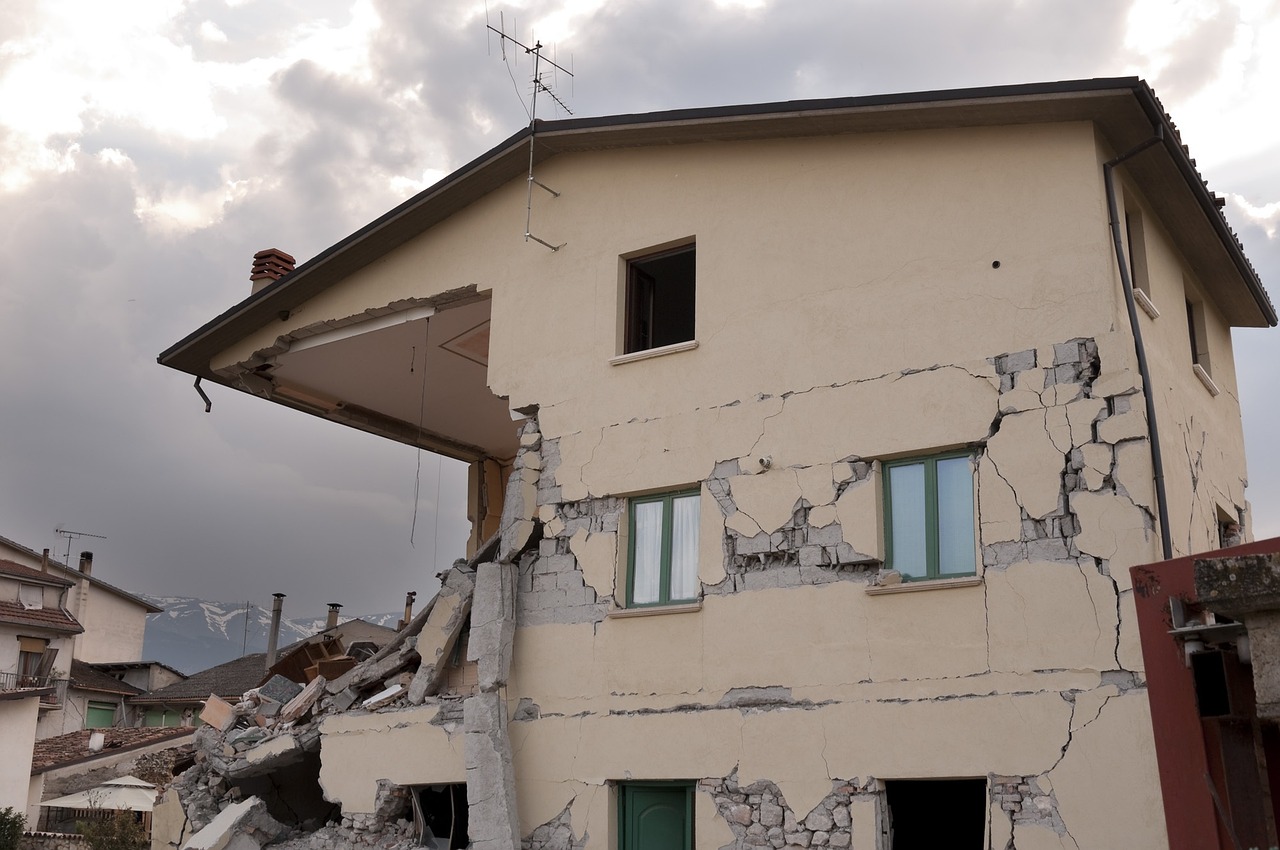
Employee Engagement in Drills
When it comes to disaster preparedness, one of the most critical elements is . Think of it this way: if a fire alarm goes off in a crowded theater, how many people would actually know what to do? The same principle applies in the corporate world. Engaging employees in regular drills not only equips them with necessary skills but also fosters a culture of preparedness that can make a world of difference during an actual crisis.
To truly engage employees, companies need to create an atmosphere that encourages participation. This can be achieved through a variety of methods. For instance, incorporating interactive training sessions can make drills more enjoyable and effective. Instead of the traditional lecture format, consider using role-playing scenarios or simulations that mimic real-life situations. This hands-on approach not only keeps employees interested but also allows them to practice their responses in a safe environment.
Moreover, it’s essential to communicate the importance of these drills clearly. Employees should understand that their safety and the safety of their colleagues depend on their preparedness. Highlighting past incidents, whether they are local or industry-specific, can serve as a powerful motivator. When employees see the real-world implications of being unprepared, they are more likely to take drills seriously.
Another effective strategy is to incentivize participation. Offering rewards or recognition for employees who actively engage in drills can boost morale and encourage more people to participate. For example, companies might implement a points system where employees earn points for attending and performing well in drills, which can later be redeemed for prizes or extra time off. This creates a fun and competitive atmosphere that can significantly enhance engagement.
Regular feedback is also crucial. After each drill, companies should take the time to solicit feedback from participants. This can be done through surveys or informal discussions. Understanding what employees found helpful or challenging during the drill can provide valuable insights for improving future training sessions. Additionally, acknowledging and addressing employee concerns demonstrates that the company values their input, which can further encourage active participation.
Incorporating technology into drills can also enhance engagement. For example, utilizing mobile apps that simulate disaster scenarios can make training more accessible and appealing. Employees can practice their responses on their own time, making it easier to fit training into their busy schedules. Furthermore, virtual reality (VR) training can provide immersive experiences that allow employees to face disaster scenarios in a controlled setting, making the training feel more real and impactful.
Ultimately, the goal of engaging employees in drills is to create a team that is not only prepared but also confident in their ability to respond effectively during a crisis. By fostering a culture of preparedness, companies can significantly enhance their disaster response capabilities, ensuring that everyone knows their role when the unexpected happens. Remember, a well-prepared employee is not just a participant in a drill; they are a crucial asset in the face of adversity.
- Why are drills important for employee safety?
Drills help employees practice their responses to emergencies, ensuring they know what to do when a real crisis occurs. - How often should companies conduct drills?
It is recommended to conduct drills at least twice a year, but more frequent drills can help reinforce training and keep preparedness top of mind. - What types of disasters should companies prepare for?
Companies should consider the most likely threats to their operations, such as fires, earthquakes, floods, or even cybersecurity breaches. - How can technology enhance disaster drills?
Technology such as mobile apps and virtual reality can make training more engaging and realistic, helping employees better prepare for actual emergencies.

Evaluating Drill Effectiveness
Evaluating the effectiveness of disaster response drills is not just a box-ticking exercise; it’s a crucial step in ensuring that your corporate disaster preparedness plan is not only theoretical but also practical. Imagine throwing a surprise party for a friend without knowing if they even like surprises—it's a gamble! Similarly, if you conduct drills without proper evaluation, you risk being unprepared when the real thing happens. So, how do we go about assessing these drills to ensure they are effective?
First and foremost, it’s essential to establish clear objectives before conducting a drill. What are you trying to achieve? Whether it's improving communication, ensuring employee safety, or testing the response time of your team, having specific goals allows you to measure success accurately. After the drill, gather feedback from participants. This can be done through surveys or informal discussions. Ask questions like:
- What went well during the drill?
- What challenges did you encounter?
- How confident do you feel in your ability to respond in a real emergency?
This feedback is invaluable. It not only highlights areas for improvement but also boosts employee morale by showing that their opinions matter. After collecting this data, analyze it to identify trends or common issues. For instance, if multiple employees struggled with communication protocols, that’s a clear indication that further training is needed in that area.
Another effective method for evaluating drill effectiveness is to conduct a debriefing session. This is where you can gather all participants and discuss the drill in detail. By fostering an open environment, employees can share their insights openly, creating a culture of continuous improvement. During these sessions, consider using metrics to assess performance, such as:
| Metric | Description | Importance |
|---|---|---|
| Response Time | Time taken to respond to the simulated emergency | Indicates readiness and efficiency |
| Communication Clarity | Effectiveness of communication during the drill | Essential for coordinated efforts |
| Employee Confidence | Self-reported confidence levels post-drill | Reflects preparedness and morale |
After evaluating these metrics, it’s crucial to develop an action plan based on your findings. This plan should outline specific steps to address any weaknesses identified during the drill. For example, if response times were slower than expected, consider implementing more frequent drills or providing additional training sessions focused on speed and efficiency.
Lastly, remember that evaluating drill effectiveness is not a one-time task. It should be an ongoing process, integrated into your overall disaster preparedness strategy. Just like a sports team reviews game footage to improve performance, your company should consistently assess its drills to ensure that everyone is ready for any situation that might arise. By regularly evaluating and refining your approach, you can create a resilient organization that not only survives disasters but thrives in the face of adversity.
Q: How often should disaster drills be conducted?
A: It’s recommended to conduct disaster drills at least twice a year, but more frequent drills can be beneficial, especially for high-risk industries.
Q: What should be included in a drill evaluation?
A: A comprehensive evaluation should include participant feedback, performance metrics, and a debriefing session to discuss findings and improvements.
Q: Can technology assist in evaluating drills?
A: Absolutely! Tools like simulation software and video recordings can provide valuable insights into how drills are conducted and where improvements are needed.

Collaboration with Emergency Services
When it comes to disaster preparedness, is a game-changer for corporations. Imagine a well-oiled machine where every cog works in harmony; this is what effective collaboration looks like. By establishing partnerships with local fire departments, police, and emergency medical services, companies can significantly enhance their ability to respond to crises. This collaboration not only improves response times but also ensures that businesses are aligned with community resources, creating a safety net that benefits everyone.
One of the key advantages of working with emergency services is the access to expertise and training. Emergency responders have the experience and knowledge that can be invaluable during a crisis. Corporations can invite these professionals to conduct training sessions, share insights on potential risks, and even participate in drills. This not only equips employees with essential skills but also fosters a sense of community between businesses and emergency services. After all, when disaster strikes, it's all hands on deck!
Moreover, collaboration allows for the development of a coordinated response plan. This plan should outline the roles and responsibilities of both the corporation and the emergency services during a disaster. For example, who will handle communication? How will the evacuation process be managed? By addressing these questions in advance, companies can ensure that everyone knows their role, leading to a more efficient response.
To illustrate the impact of such partnerships, consider the following table that highlights the benefits of collaboration:
| Benefit | Description |
|---|---|
| Improved Response Time | Quicker mobilization of resources during emergencies. |
| Enhanced Training | Access to specialized training and drills from emergency professionals. |
| Resource Sharing | Utilization of local emergency service resources and expertise. |
| Community Trust | Building stronger relationships with local emergency services fosters trust. |
In addition to the operational benefits, collaboration with emergency services can also enhance a company's reputation. When businesses actively engage in community safety, they not only protect their employees but also contribute to the welfare of the community at large. This proactive approach can lead to improved public relations and customer loyalty, as stakeholders appreciate a company that prioritizes safety and preparedness.
However, successful collaboration requires ongoing communication and commitment. Companies should regularly meet with emergency service representatives to review and update their disaster response plans. This ensures that everyone is on the same page and that any changes in local resources or procedures are accounted for. By fostering these relationships, corporations can create a robust support system that stands ready to tackle any disaster that may arise.
In conclusion, the synergy between corporations and emergency services is essential for effective disaster management. By leveraging each other's strengths, both parties can create a safer environment that not only protects employees but also enhances community resilience. So, why wait? Start building those partnerships today; your future self will thank you!
- Why is collaboration with emergency services important for businesses? Collaboration improves response times, enhances training, and builds community trust.
- What are some effective ways to engage with local emergency services? Regular meetings, joint training exercises, and developing coordinated response plans are effective strategies.
- How can businesses assess their collaboration effectiveness? Companies can evaluate their response during drills and real emergencies, seeking feedback from emergency service partners.

Case Studies of Successful Preparedness
When it comes to disaster preparedness, real-world examples often provide the most enlightening insights. Companies across various sectors have implemented innovative strategies that not only safeguard their operations but also ensure the safety of their employees. Let's dive into a few compelling case studies that showcase successful corporate preparedness.
One notable example is Walmart, which has developed a robust disaster response framework. During Hurricane Katrina in 2005, Walmart quickly mobilized its resources to assist affected communities. The company utilized its extensive logistics network to deliver supplies, demonstrating the importance of having a flexible and responsive plan in place. Walmart's approach included:
- Real-time data analysis to assess the needs of affected areas.
- Collaboration with local agencies to ensure efficient distribution of aid.
- Establishing emergency response teams that are trained to act swiftly.
This proactive stance not only helped the communities but also reinforced Walmart's reputation as a responsible corporate citizen.
Another inspiring case is that of American Express, which has invested significantly in employee training and preparedness. After facing disruptions from natural disasters, the company implemented a comprehensive training program that includes:
- Regular drills simulating various disaster scenarios.
- Workshops focusing on personal safety and emergency response.
- Engagement initiatives that encourage employees to contribute ideas for improving preparedness.
These efforts have fostered a culture of safety and readiness, ensuring that employees are not only aware of the protocols but are also actively involved in the process.
Furthermore, Microsoft has harnessed technology to enhance its disaster preparedness strategy. The company developed a cloud-based platform that allows for real-time monitoring and communication during emergencies. This system enables Microsoft to:
- Quickly assess the impact of a disaster on operations.
- Coordinate with local emergency services and other stakeholders.
- Provide employees with timely updates and instructions.
By leveraging technology, Microsoft not only safeguards its assets but also enhances the overall effectiveness of its disaster response efforts.
These case studies illustrate that successful disaster preparedness is not merely about having a plan; it's about creating a culture of readiness, leveraging technology, and fostering collaboration. Companies that invest in these areas not only protect their operations but also contribute positively to their communities. As we continue to face an ever-evolving landscape of potential disasters, the lessons learned from these organizations can serve as a roadmap for others looking to enhance their preparedness strategies.
Q1: Why is disaster preparedness important for corporations?
A1: Disaster preparedness is crucial as it minimizes damage, ensures employee safety, and helps maintain operational continuity during emergencies. It allows companies to respond effectively to crises, ultimately safeguarding their reputation and financial stability.
Q2: What are some common strategies for disaster preparedness?
A2: Common strategies include conducting risk assessments, creating response plans, engaging in regular training and drills, and collaborating with local emergency services. Utilizing technology for communication and monitoring can also significantly enhance preparedness.
Q3: How can companies evaluate the effectiveness of their preparedness plans?
A3: Companies can evaluate their preparedness plans through regular drills and simulations, gathering feedback from employees, and analyzing performance metrics during training exercises. Continuous improvement based on these evaluations is key to a successful preparedness strategy.

Future Trends in Disaster Management
As we look toward the future, the landscape of disaster management is rapidly evolving, influenced by advancements in technology, changes in societal expectations, and the increasing frequency of natural disasters. Companies are no longer just reacting to emergencies; they are proactively shaping their disaster preparedness strategies. So, what can we expect in the coming years?
One of the most significant trends is the integration of artificial intelligence (AI) and machine learning into disaster management systems. These technologies can analyze vast amounts of data to predict potential disasters and assess risks more accurately than ever before. For instance, AI can process weather patterns, historical data, and even social media trends to provide real-time insights that help businesses prepare more effectively.
Moreover, the rise of cloud computing is revolutionizing how companies store and access critical information during a disaster. With cloud-based solutions, businesses can ensure that their data is secure and accessible from anywhere, allowing for seamless communication and coordination during emergencies. This shift not only enhances operational continuity but also significantly reduces recovery time.
Another exciting trend is the emphasis on community resilience. Companies are beginning to recognize that their disaster preparedness is interconnected with the communities in which they operate. By collaborating with local organizations and emergency services, businesses can create a more robust support system that benefits everyone. This partnership approach not only enhances response efforts but also fosters goodwill and strengthens community ties.
Additionally, the concept of remote work readiness is gaining traction. The COVID-19 pandemic has shown that businesses can operate effectively from remote locations. As a result, companies are developing comprehensive plans that include remote work strategies as part of their disaster preparedness. This means ensuring that employees have the necessary tools and resources to work from home during crises, thereby maintaining productivity and safety.
Finally, there is a growing focus on sustainability in disaster management. As climate change continues to impact the frequency and severity of natural disasters, businesses are looking for ways to incorporate sustainability into their preparedness strategies. This includes investing in green technologies, reducing carbon footprints, and developing eco-friendly response plans. Not only does this approach help the environment, but it also resonates with consumers who increasingly prioritize sustainability in their purchasing decisions.
In summary, the future of disaster management is bright and full of potential. With the integration of advanced technologies, a focus on community collaboration, and a commitment to sustainability, companies are better equipped than ever to face the challenges that lie ahead. As we continue to innovate and adapt, the goal remains clear: to protect lives, preserve assets, and ensure that businesses can thrive even in the face of adversity.
- What role does technology play in disaster management?
Technology enhances disaster preparedness by providing tools for risk assessment, real-time data analysis, and effective communication during emergencies. - How can businesses ensure employee safety during disasters?
By developing comprehensive disaster response plans, conducting regular training and drills, and maintaining open lines of communication. - What is community resilience, and why is it important?
Community resilience refers to the ability of a community to withstand and recover from disasters. It is crucial because it fosters collaboration and support during crises. - How can companies incorporate sustainability into their disaster management plans?
By investing in green technologies, reducing waste, and developing eco-friendly response strategies that consider environmental impact.
Frequently Asked Questions
- What is disaster preparedness in a corporate context?
Disaster preparedness in a corporate context refers to the planning and strategies that organizations implement to effectively respond to emergencies. It involves identifying potential risks, creating response plans, and ensuring that employees are trained to handle various disaster scenarios.
- Why is risk assessment crucial for businesses?
Risk assessment is crucial because it helps businesses identify potential threats and vulnerabilities. By understanding these risks, companies can develop robust response plans that minimize damage and ensure quick recovery during emergencies.
- How can technology aid in disaster preparedness?
Technology plays a significant role in disaster preparedness by providing tools and software that help organizations evaluate their readiness. These technologies can streamline risk assessments, enhance communication during emergencies, and facilitate training exercises.
- What types of training should employees undergo?
Employees should undergo training that covers emergency response procedures, evacuation plans, and specific roles during a disaster. Regular drills and simulations can help reinforce this training, ensuring that everyone knows what to do when an emergency arises.
- How often should disaster drills be conducted?
Disaster drills should be conducted regularly—at least once or twice a year—to ensure that employees remain familiar with emergency procedures. Frequent drills help maintain a culture of preparedness and allow for the evaluation of response plans.
- What is the importance of collaboration with emergency services?
Collaboration with local emergency services is vital as it enhances disaster response capabilities. By working together, corporations can improve their preparedness and recovery efforts, ensuring a more effective response during crises.
- Can you provide examples of successful corporate disaster preparedness?
Yes! Many companies have successfully implemented disaster preparedness initiatives. For instance, organizations that have established comprehensive training programs and engaged in regular drills often report better outcomes during emergencies. Case studies can highlight these effective strategies and their positive impacts.
- What future trends should companies be aware of in disaster management?
Future trends in disaster management include the integration of advanced technologies, such as AI and data analytics, to predict and respond to disasters more effectively. Companies should also stay informed about evolving risks and adapt their strategies accordingly.



















